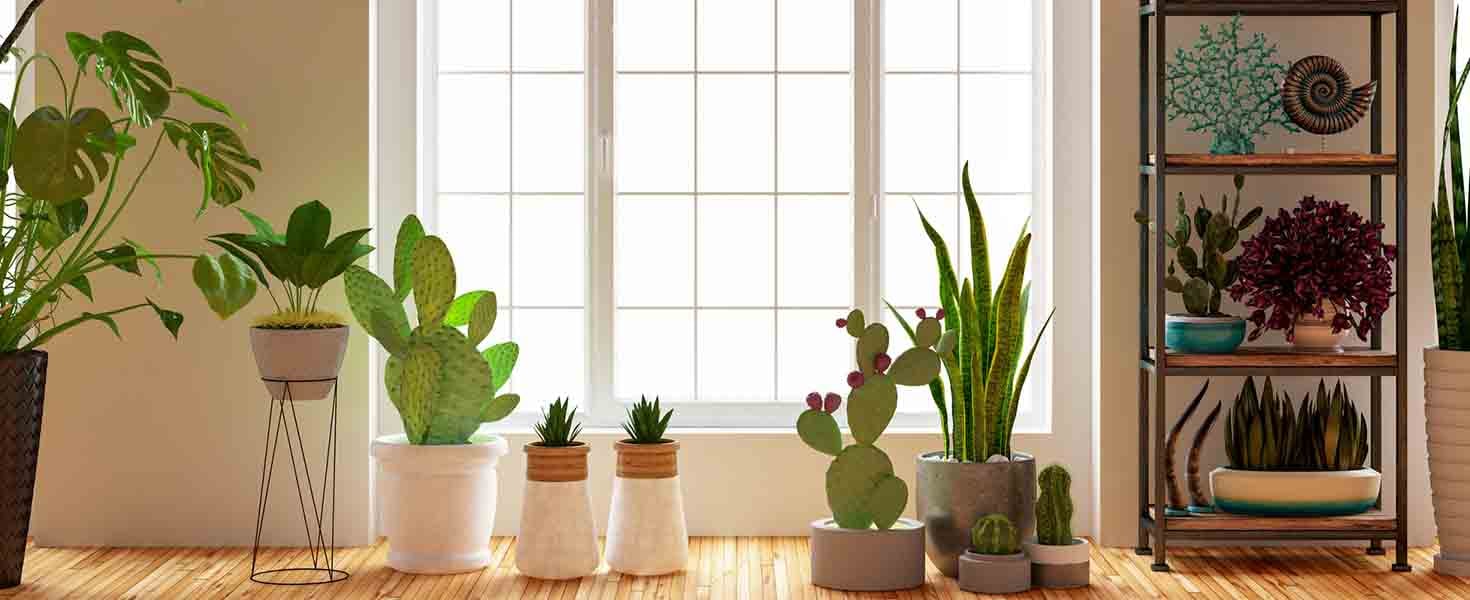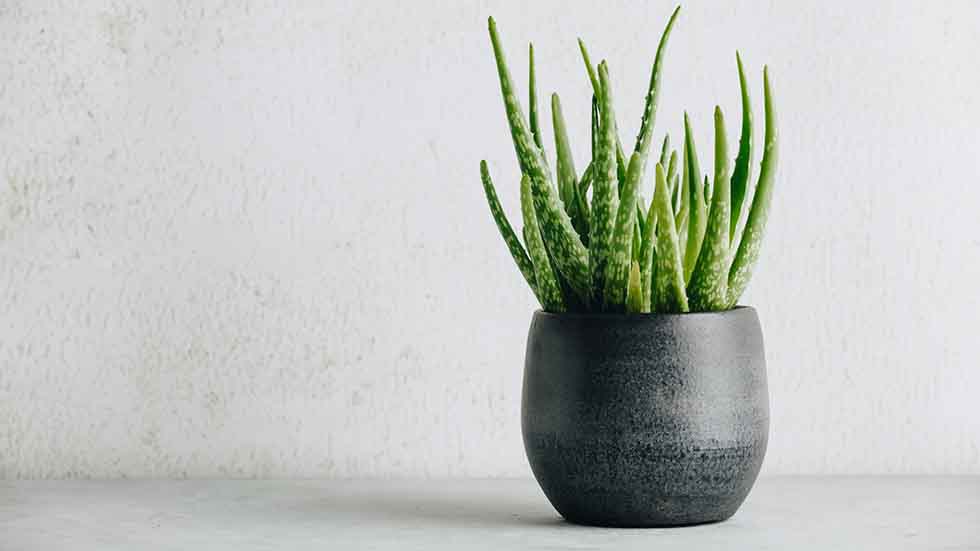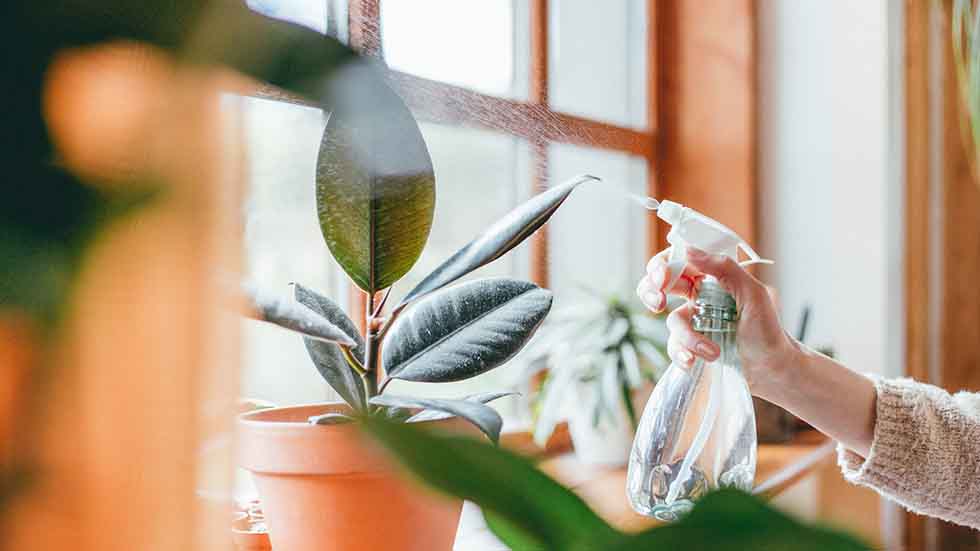Houseplants You Can't Kill
Tips on how to keep your plants alive with the right amount of water and sunlight


Studies have shown that indoor plants can help improve concentration and productivity, reduce stress levels, and boost your mood. They help clean the air in your home by absorbing toxins, increasing humidity and producing oxygen. The clean air can even help reduce fatigue, sore throats, and colds.
While there are a number of benefits to having plants in your home, not everyone has a green thumb to keep these plants thriving. However, there are a few houseplants that are virtually impossible to kill, and are perfect for those looking for a low maintenance plant with all of the benefits.
Here are the top five houseplants for people who kill houseplants.

Pothos ivy
This may be one of the easiest houseplants to grow and take care of, even if you’re one who forgets to water your plants. The trailing vine plant has pointed, heart-shaped green leaves, and while the vines can grow up to 30 feet long, they can be pruned and trained to grow in certain directions.
Light
Typically these plants like bright, indirect light, but they can thrive in areas that don’t get a lot of sunlight or only have fluorescent lighting, like in an office.
Water
Allow the soil to dry somewhat between watering. Look for black spots on the leaves or sudden collapse of the plant, which indicate the soil is too wet. When the leaves start to droop, it’s time to water it. Brown edges mean the plant was kept dry too long.

Aloe plant
While aloe is considered a succulent, it’s both easy to take care of and useful—the juice from its leaves can be used to relieve pain from burns, cuts, and scrapes.
Light
Aloe likes bright, indirect sunlight. It would do best near a kitchen or other window, where it’s not directly hit by the sun’s rays. If the leaves start to dry out and turn yellow, it’s receiving too much sun.
Water
Aloe doesn’t need to be watered frequently. Allow the soil to dry at least one to two inches deep between watering, and do not let the plant sit in water. Water about every three weeks, or even longer in the winter.
Rubber tree
Characterized by its glossy, burgundy leaves, a rubber tree is an easy-to-care-for houseplant that doesn’t require much work. However, this plant can be poisonous to cats, dogs, and humans if ingested, so keep it out of reach of small children and pets.
Light
Rubber trees need bright light, but prefer indirect light that doesn’t get too hot. Put it near a window that has blinds or sheer curtains, or place it in a room that gets medium to bright light. If the color is fading on the leaves, it’s not getting enough light.
Water
Typically you can water the tree every one to two weeks. Allow the soil to mostly dry out before watering again. If you’re watering too much, the leaves will turn yellow and brown and start to fall off. If the leaves begin to droop but do not fall off, you’re not watering it enough.

Peperomia
There are more than 1,000 species of this plant, all with thick, fleshy leaves. The foliage does not flower, but can come in a variety of colors like red, green, grey, purple, marbled, or solid. Leaves can be large or tiny and even come in different shapes. They are mostly slow-growing and low maintenance, so they are perfect indoor plants.
Light
These plants are great for all lighting scenarios. They can thrive in low light, but also do well in medium to bright indirect light. If the plant starts losing leaves or color, it’s not getting enough light.
Water
Peperomia plants don’t require a lot of water. In fact, allow the soil to dry out between watering—keeping them dryer is better than allowing them to get too wet. If the leaves droop or start to curl, it needs more water—once every one to two weeks should suffice.
Heartleaf philodendron
Also known as the Sweetheart Plant, it’s one of the easiest houseplants to grow. It has heart-shaped, glossy leaves that are typically 2-4 in. long, with vine-like stems that can grow up to four feet. Pinch the plant back any time to help it branch out and remain full, or simply let it grow. Philodendron plants are poisonous, so they should be kept away from small children and pets.
Light
While these plants can survive in low light, they grow faster and produce more leaves in moderate to bright indirect sunlight. It also can thrive under fluorescent light, making it a great office plant. Brown scorch marks on leaves or long spaces between leaves show the plant isn’t getting enough light, so move it to a brighter location.
Water
Keep the soil slightly moist. While it will tolerate dry soil, don’t let it go too long without watering. If the leaves are wilted, it’s time to water. However, if the leaves are yellow, you’re overwatering.
